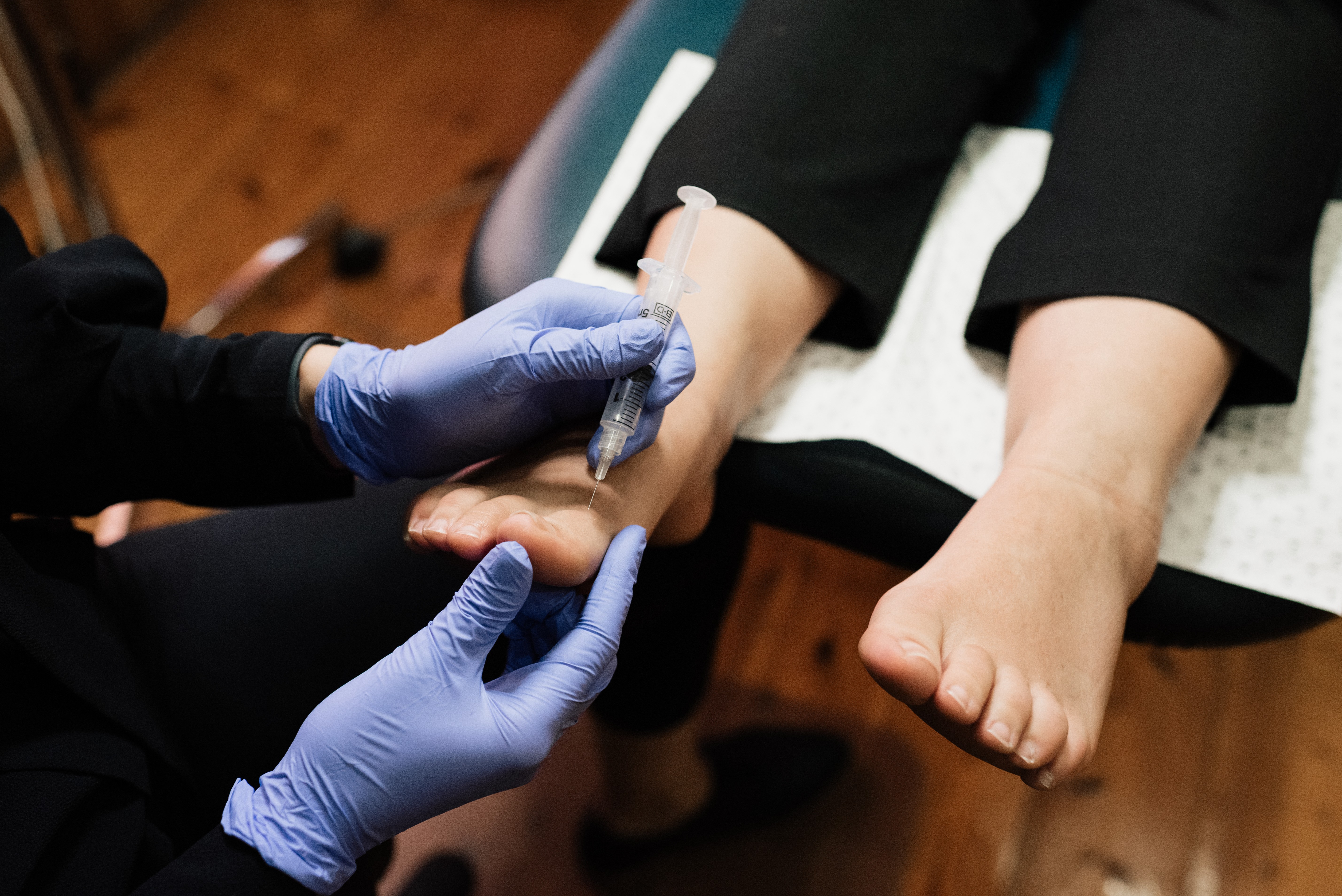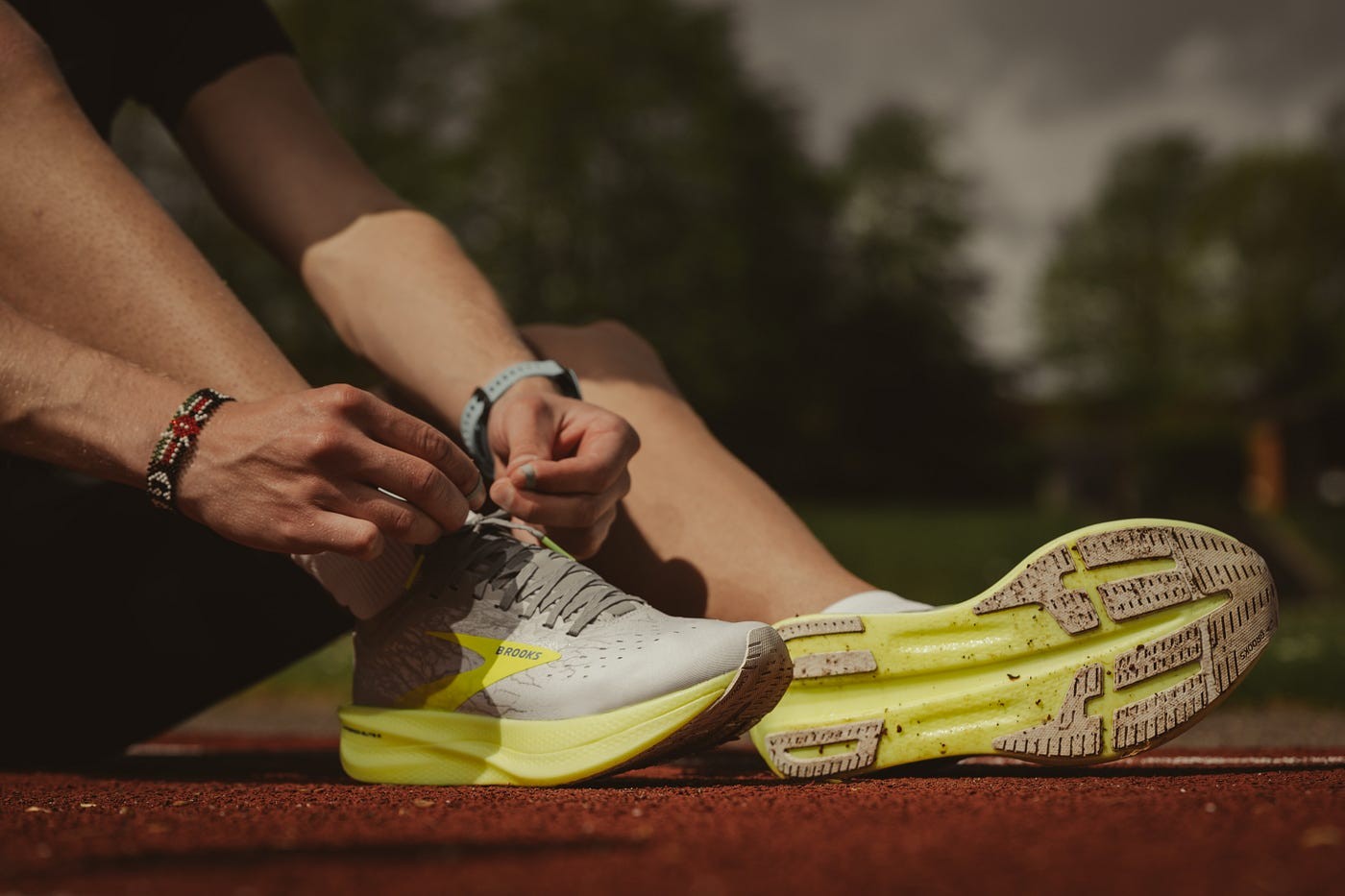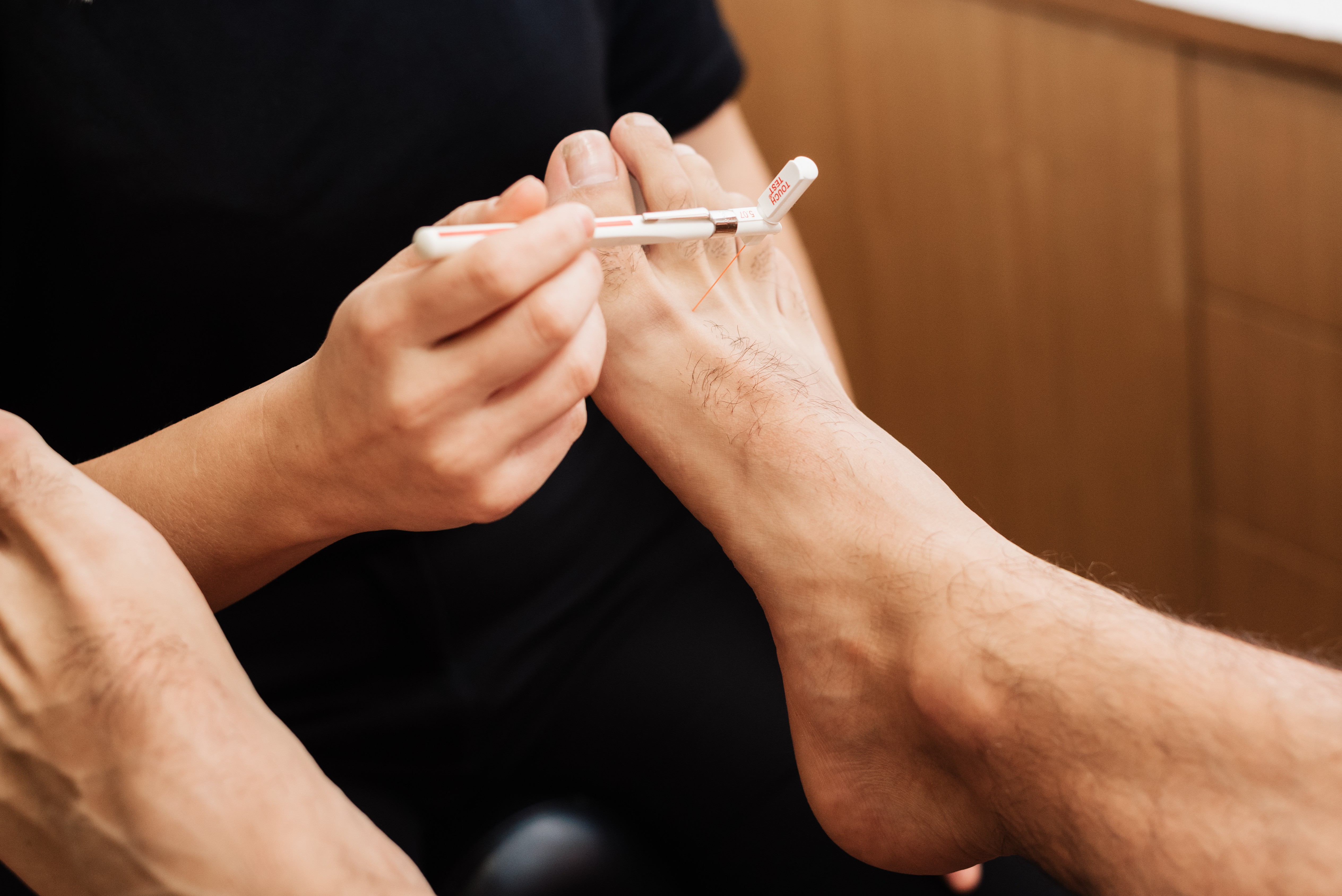With the beginning of the new sports season we often seen an influx of children between the ages of 8-15 present with painful heels after their sports games. This is often related to a condition called Sever’s Disease.
To make a booking call 08 83634588 or contact us via our contact page.
What is Sever’s Disease?
‘Sever’s’ or ‘Sever’s Disease’ is the irritation of the heel growth plate(s) and is the most common cause of heel pain in growing, active children.
Although ‘Sever’s Disease’ sounds a bit sinister, it is actually not a ‘disease’ and the prognosis is a self-limiting, benign syndrome which means it resolves when the growth spurt stops, without any long term complications. However, the symptoms during the flare up period can be quite painful and may need Podiatric management.
What is the cause?
Officially it is “A painful inflammation of the calcaneal apophysis due to repetitive trauma which aggravates the insertion of the Achilles tendon.”
I like to explain it a bit more simply as an overuse of the bone and tendons around the heel during a growth spurt. It occurs commonly in children with feet that roll in, and who are active and are growing.
How does it present, what are the symptoms?
Sever’s is commonly found in active children and it’s usually aggravated by walking, running or jumping. It is associated with pain in the back and sides of the heel over the growth plate area of the calcaneus (heel bone).
Typical history:
Some other common characteristics of Sever’s:
Expected findings:
Prognosis
To make a booking call 08 83634588 or contact us via our contact page.
Differential diagnosis – what we want to make sure we rule out!
The key characteristics of a differential diagnosis is having a negative squeeze test of the heel.
This then requires further investigation for other possible problems.
Traumatic events causing heel pain have key differentiating characteristics and good history taking is essential.
Further investigation with imaging such as x-ray, ultra sound and MRI is warranted to rule out more serious problems if deemed necessary.
Infective and internal causes of heel pain usually involve other key characteristics such as systemic symptoms including malaise (tiredness/ fatigue), a raise in core temperature, night pain, or generalised aches.
Treatment of Sever’s Disease
Stage 1 – Rest and recovery
Stage 2 – Increasing strength and biomechanical correction
Some examples:
To make a booking call 08 83634588 or contact us via our contact page.
Sever JW. Apophysitis of the os calcis. N Y Med J. 1912;95: 1025–1029.
Sharfbillig RW, Jones S, Scutter SD. Sever’s disease: what does the literature really tell us? J Am Podiatr Med Assoc. 2008;98:212–223.
Suneel B. Practical pointers on treating Sever’s disease in young athletes. Podiatry Today. 2011;24(10):20-21.
Chiodo WA, Cook KD. Pediatric heel pain. Clin Podiatr Med Surg 2010;27:355–67.
Micheli LJ, Ireland ML. Prevention and management of calcaneal apophysitis in children: an overuse syndrome. J Pediatr Orthop 1987;7:34–8.
Rachel JN, Williams JB, Sawyer JR, Warner WC, Kelly DM. Is radiographic evaluation necessary in children with a clinical diagnosis of
calcaneal apophysitis (sever disease)?. J Pediatr Orthop. 2011 Jul-Aug. 31(5):548-50.
Volpon JB, Filho GDC. Calcaneal apophysitis: a quantitative radiographic evaluation of the secondary ossification center. Arch Orthop Trauma Surg. 2002;122:338–341.

Ingrown toenails can be painful, unsightly and debilitating. This post explores the many different factors that drive an ingrown toenail and how to prevent their development or manage them successfully.

When is it time to change your running or walking shoes? How long do they really last and what are the main signs that your shoes are ready for a change?

In the realm of diabetes management, where foot health plays a pivotal role, individuals in the Australian population are finding a trusted ally in PodSquared Podiatry. Specialising in comprehensive foot care, PodSquared Podiatry takes a proactive stance in addressing the unique challenges posed by diabetes. In this blog post, we'll delve into the tailored approach PodSquared Podiatry adopts to ensure optimal foot health for those managing diabetes.